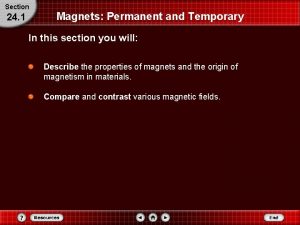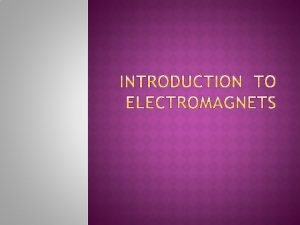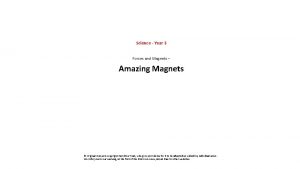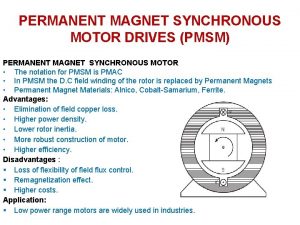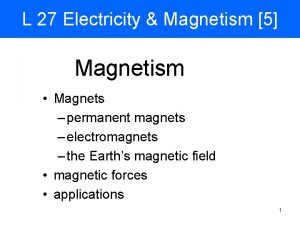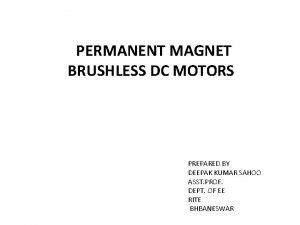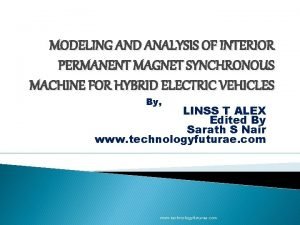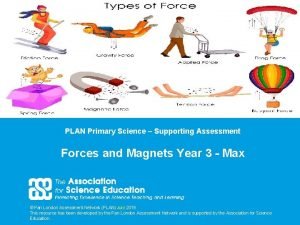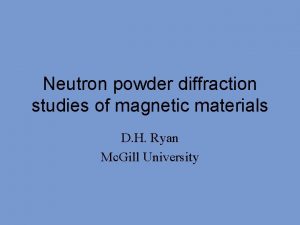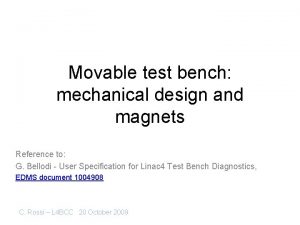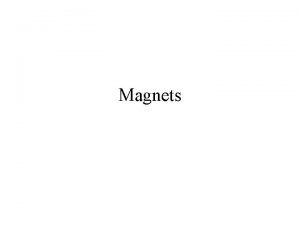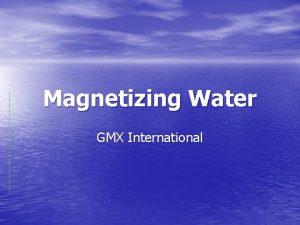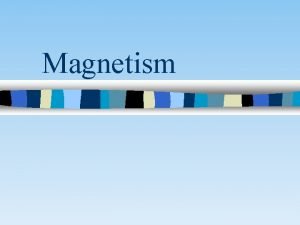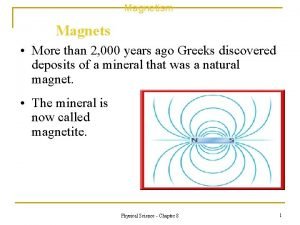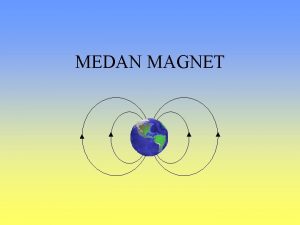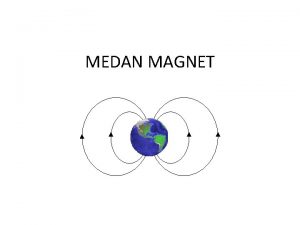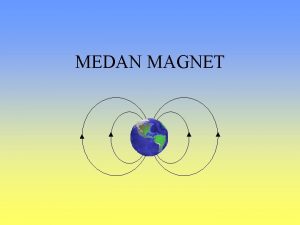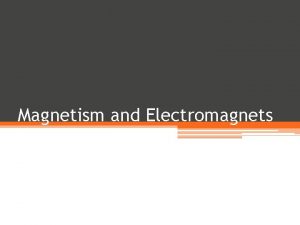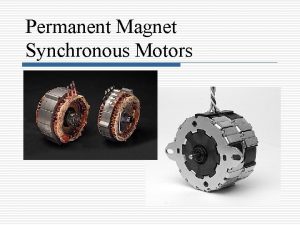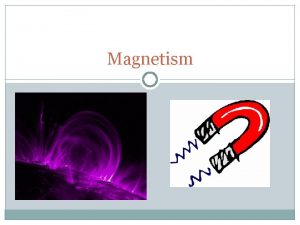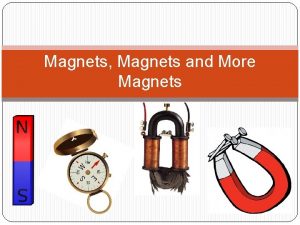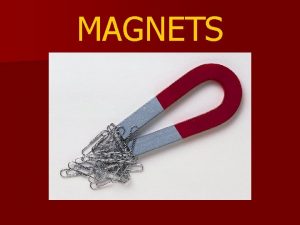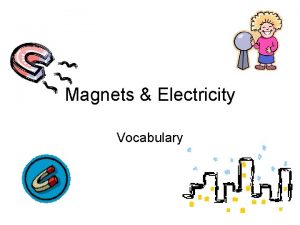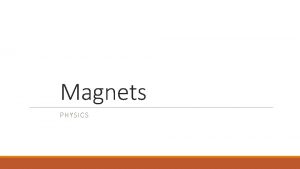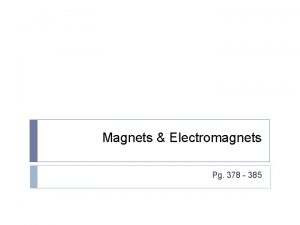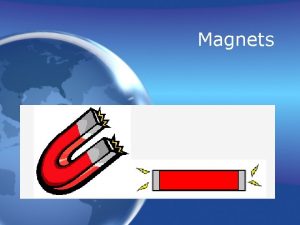Permanent Magnets Principle of Permanent Magnet Types of

















- Slides: 17

Permanent Magnets • • Principle of Permanent Magnet Types of Permanent Magnets and Applications The Maximum Energy Product Condition for minimum volume of a permanent magnet.

Permanent Magnets

There are Three Types of Permanent Magnets Ferrite 1930 Alnico 1931 Rear Earth Materials 1970 s (Samarium and Neodymium)

Ferrite Permanent Magnets Yogoro Kato and Takeshi Takei of the Tokyo Institute of Technology invented this material in 1930. These so-called ceramic magnets are cheap, and are widely used in household products such as refrigerator magnets. The maximum magnetic field B is about 0. 35 tesla and the magnetic field strength H is about 30 to 160 k. A turns per meter (400 to 2000 Oe). (1 Oe≈ 80 Am). The density of ferrite magnets is about 5 g/cm 3. Father of ferrite: Dr. Yogoro Kato (left) and Dr. Takeshi Takei (right)

Alnico The development of alnico began in 1931, when T. Mishima in Japan discovered that an alloy of iron, nickel, and aluminum had a coercivity of 400 Oersted (Oe) or (32 k. A/m). Alnico = Al + Ni + Co The composition of alnico alloys is typically 8– 12% Al, 15– 26% Ni, 5– 24% Co, up to 6% Cu, up to 1% Ti, and the balance is Fe. Alnico family: Alni, Alcomax, Hycomax, Columax, and Ticonal. Japanese metallurgist, Tokushichi Mishima (1893 -1975)

Rare Earth Samarium-Cobalt Manufactured in Japan 1970 Two grams of ultrapure sublimated samarium, about 0. 8 by 1. 5 cm. Samarium Cobalt (Rear Earth) (Sm. Co 5) Samarskite The French chemist Paul Émile Lecoq de Boisbaudran (1838 -1912). The discoverer of Samarium in 1874.

Samarium Cobalt Capabilities: • Samarium Cobalt rare earth magnets are often used in high temperature applications needing high magnetic performance and where magnetic stability over a wide range of temperatures is important. • Sm. Co magnets available in grades from 16 to 32 MGOe and temperatures up to 350°C/662°F.

Rare Earth Neodymium 1970 s Japan Pure Neodymium Bastnaesite Carl Auer von Welsbach (1858– 1929) Discoverer of neodymium. an Austrian chemist, in Vienna in 1885.

Neodymium magnet electric motors have also been responsible for the development of purely electrical model aircraft within the first decade of the 21 st century. Neodymium is used in the electric motors of hybrid and electric automobiles, and in the electricity generators of some designs of commercial wind turbines.

Neodymium Capabilities: • Neodymium is the strongest available magnet alloy at up to 52 MGOe. • The use of Neodymium results in smaller, more cost-effective magnet solutions replacing older materials like Alnico and Ceramic in many applications. • Neo magnets can be achieved in grades from 33 to 52 MGOe and operating temperatures up to 230°C/446°F.

What is the meaning of the Maximum Energy Product (BHmax) and How Does It Correspond to Magnet Grade?





1

 What happens when you break a magnet in half
What happens when you break a magnet in half Temporary magnet
Temporary magnet Amazing magnets fishing magnet
Amazing magnets fishing magnet Pmac motor magnet
Pmac motor magnet How are permanent magnets formed
How are permanent magnets formed Permanent and induced magnets bbc bitesize
Permanent and induced magnets bbc bitesize Kutub a dan b adalah
Kutub a dan b adalah Blpm motor
Blpm motor Kicker syncronous
Kicker syncronous Magnets for year 3
Magnets for year 3 Magnets and springs
Magnets and springs Why do magnets repel
Why do magnets repel Magnets for neutron diffraction
Magnets for neutron diffraction Amazing magnets
Amazing magnets Why do magnets repel
Why do magnets repel Gmx problem
Gmx problem Natural magnets examples
Natural magnets examples A single wire wrap into a cylindrical wire coil is called
A single wire wrap into a cylindrical wire coil is called
